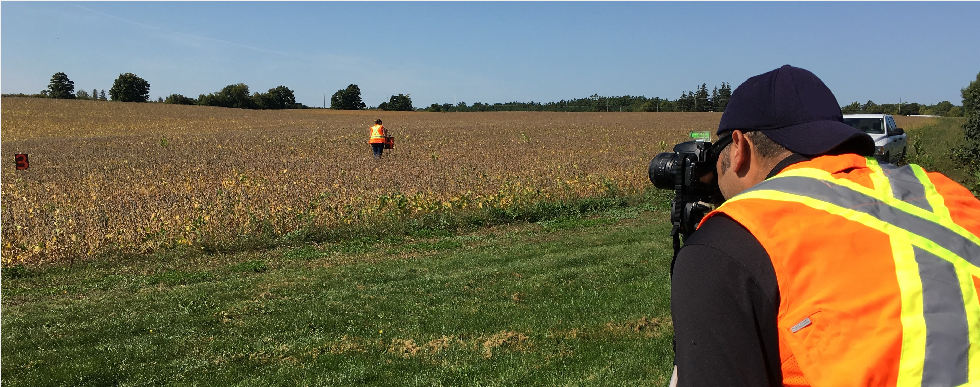Site Plans
- 8816AF - Caledon Pit and Quarry - Site Plan - Signed - August 2023 (Superseded) – 12.40 MB
- 8816AF - Caledon Pit and Quarry - Site Plan - Redlined - August 2024 (Superseded) – 15.091 MB
- 8816AF - Caledon Pit and Quarry - Site Plan - Redlined - March 2025 (Superseded) – 15.135 MB
- 8816AF - Caledon Pit and Quarry - Site Plan - Redlined - May 2025 (Superseded) – 49.583 MB
- 8816AF - Caledon Pit and Quarry - Site Plan - Redlined - July 2025 – 15.405 MB
Planning
- Planning Justification & ARA Summary - December 2022 (Revised July 2023) – 44.1 MB
- Planning Justification Report Addendum - May 2025 – 4.543 MB
Agriculture
Air Quality
- Air Quality Impact Assessment - December 2022 (Revised July 2023) – 28.98 MB
- Best Management Practices Plan for Dust - March 2025 (Superseded) – 3.605 MB
- Best Management Practices Plan for Dust - May 2025 – 5.208 MB
Archaeology
- Stage 1-2 Archaeological Assessment - December 2022 – 28.0 MB
- Stage 3 Archaeological Assessment - Location 10 - July 2024 – 8.87 MB
- Stage 3 Archaeological Assessment - Location 26 - July 2024 – 6.88 MB
- Stage 3 Archaeological Assessment - Location 22 - July 2024 – 7.44 MB
- Stage 3 Archaeological Assessment - Location 16 - Revised March 2025 – 9.28 MB
- Stage 3 Archaeological Assessment - Location 18 - Revised March 2025 – 14.26 MB
- Stage 3 Archaeological Assessment - Location 9 - Revised April 2025 – 12.22 MB
- Stage 3 Archaeological Assessment - Location 4 - Revised April 2025 – 10.63 MB
- Stage 3 Archaeological Assessment - Cameron Site - Revised May 2025 – 10.76 MB
- Stage 3 Archaeological Assessment - Location 15 - Revised May 2025 – 11.90 MB
- Stage 3 Archaeological Assessment - Location 27 - Revised June 2025 – 12.52 MB
- Stage 3 Archaeological Assessment - Location 12 - Revised June 2025 – 12.90 MB
- Stage 3 Archaeological Assessment - Location 1 - Revised June 2025 – 12.78 MB
- Stage 3 Archaeological Assessment - Location 2 - Revised June 2025 – 12.47 MB
- Stage 3 Archaeological Assessment - Location 7 - Revised June 2025 – 12.31 MB
Blasting
Cultural Heritage
- Cultural Heritage Report and IA - 21July2023 – 17.42 MB
- Cultural Heritage Report Addendum - September 2025 – 4.765 MB
- Heritage Impact Assessment - 1055CharlestonSideroad - September 2025 – 55.376 MB
- Heritage Impact Assessment - 1420CharlestonSideroad - September 2025 – 58.482 MB
- Heritage Impact Assessment - 18501MississaugaRoad - September 2025 – 59.771 MB
- Heritage Impact Assessment - 18667MississaugaRoad - September 2025 – 60.914 MB
- Heritage Impact Assessment - 18722MainSt - September 2025 – 63.881 MB
Natural Environment
- Natural Environment Report - December 2022 (Revised July 2023) – 21.77 MB
- DFO Letter of Advice - December 2024 – 0.168 MB
Noise
Socio-Economics
Traffic
- CBM Truck Haulage Program - June 2019 (Updated August 2021) – 0.347 MB
- Revised Transportation Impact Study and Haul Route Assessment - March 2025 – 18.702 MB
- Transportation Impact Study and Haul Route Assessment - December 2022 (Revised July 2023) (Superseded) – 14.86 MB
Visual
- Visual Impact Assessment - December 2022 (Revised July 2023) – 27.86 MB
- Visual Impact Assessment Addendum - October 2025 – 14.733 MB
Water Resources
- Maximum Predicted Water Table Report - December 2022 (Revised July 2023) – 10.0 MB
- Water Report Level 1-2 Caledon - December 2022 (Revised July 2023) – Main Report & Appendices A to D – 39.56 MB
- Water Report Level 1-2 Caledon - December 2022 (Revised July 2023) – Appendices E to P – 40.80 MB
- Water Report Level 1-2 Caledon - December 2022 (Revised July 2023) – Appendix Q Part 1 – 49.89 MB
- Water Report Level 1-2 Caledon - December 2022 (Revised July 2023) – Appendix Q Part 2 – 29.13 MB
- Water Report Level 1-2 Caledon - December 2022 (Revised July 2023) – Appendices R to T – 4.075 MB
- Water Report Level 1-2 Caledon - December 2022 (Revised July 2023) – Figures 1-1 to 6-2 – 21.54 MB
- Water Report Level 1-2 Caledon - December 2022 (Revised July 2023) – Figures 6-3 to 9-2 – 37.07 MB
- Geomorphology Assessment - February 2025 – 15.871 MB
- Water Report Addendum - March 2025 – 29.498 MB
- Groundwater Mitigation System Design Report - May 2025 – 45.442 MB
